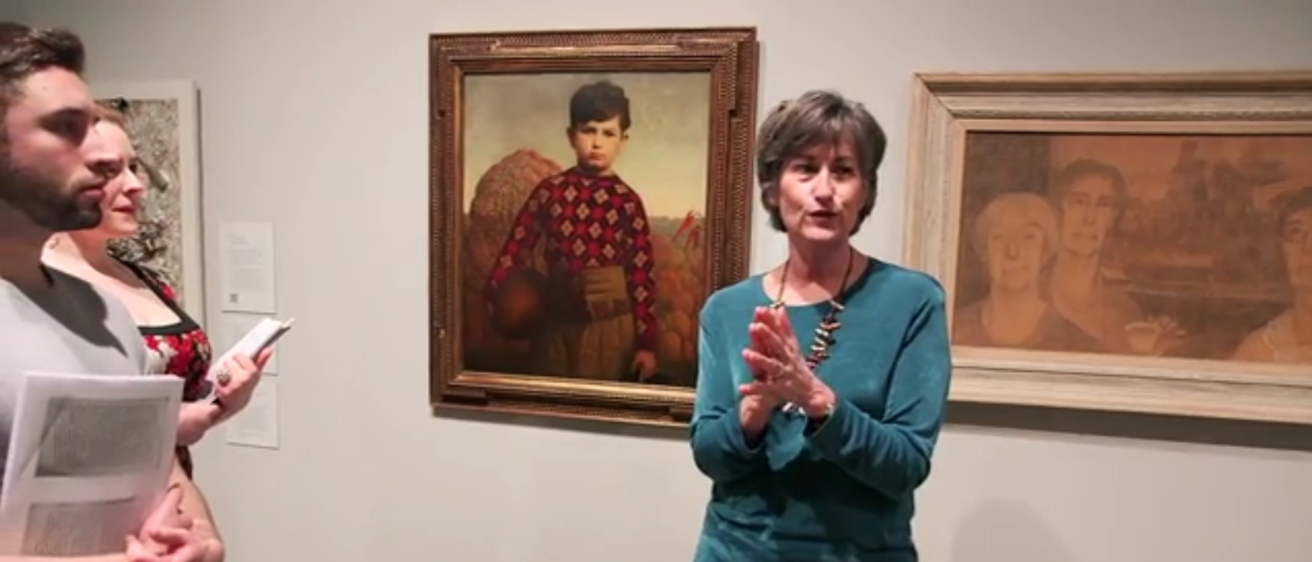A major in Art History prepares you for a wide range of professional careers as well as competitive placement in graduate schools across the country. As you progress through the program, you will study the historical relationships between societies and their works of art, consider the creative processes of making art objects, and learn methods for understanding the original contexts and interpreting the multiple meanings of paintings, sculptures, buildings, prints, ceramics, and other types of art. The major provides a strong liberal arts background and stresses the development of critical thinking, close reading of textual and visual materials, academic writing, and research skills.
Art history offers three specialized tracks within the major:
- The Iowa Idea Track, which continues our century-long tradition of combining the study of art history with hands-on creation of art in studio art courses
- The Global and Interdisciplinary Connections Track, which enables you to pursue your interests across academic departments by combining art history courses with those of another humanistic discipline
- The new Art, Museums, and Museology Track, which pairs hands-on experiential learning opportunities with the art historical disciplinary training that is essential for a successful career in an art museum, art gallery, or auction house.
Iowa was one of the first universities in the nation to unite Studio Art and Art History in one school. The School of Art, Art History, and Design continues to offer both programs, reflecting its philosophy that artists benefit from the study of artistic traditions, historians learn from personal experience with the creation of art, and teachers need a firm foundation in both. Iowa also offers a BA in Art.
Iowa also pioneered the concept of artist as teacher. As an Art or Art History major, you’ll work with faculty members who have national and international reputations and whose art and publications are included in collections all over the world.
At Iowa, you’ll find yourself surrounded by art. You’ll encounter sculptures everywhere on campus, and you may study in university buildings designed by well-known architects, present and past. You’re sure to visit the Stanley Museum of Art, which features exhibits and countless works by university artists, including your professors.
Students interested in this major need to meet the requirements for admission to the College of Liberal Arts and Sciences.
Information

First-Year

Transfer

International
Within six months of graduating, 96 percent of Iowa graduates are employed, continuing education, or not seeking work. Our Pomerantz Career Center offers multiple resources to help students find internships and jobs.
Many graduates pursue careers in their degree specializations, such as commercial or graphic designer, conservation or museum curator or administrator, art educator, public artist, or community art center coordinator or instructor.
Others go on to graduate study or enjoy success in areas such as art therapy, art appraisal, restoration, architecture, theater design, medical illustration, studio art, or disciplines outside of art.
In addition to more than 600 Student Organizations, Iowa students choose from more than 100 Study Abroad Programs and multiple Undergraduate Research Opportunities.
The University of Iowa provides a variety of scholarships to eligible undergraduate students through the Iowa Scholarship Portal. Scholarships are available to first-year, transfer, and currently enrolled students. For additional details on scholarships for your program of study, check directly with the department or college.
The Office of Admissions and the Office of Student Financial Aid are great resources for students seeking scholarships.
Art History majors choose from two specialized tracks:
The Iowa Idea Track continues our century-long tradition of combining the study of Art History with hands-on creation of art in Studio Art courses. The Iowa Idea of bringing artists and scholars together in an academic context became the model for numerous Art and Art History programs across the nation, training artists and art historians within a united studio and liberal arts environment.
The new Global and Interdisciplinary Connections Track encourages students to earn a double major in Art History and another humanistic discipline, allowing majors to tailor their studies and explore their interests across academic departments.
Students learn techniques of formal analysis and methods for interpreting the meaning of paintings, sculpture, and architecture. They explore the relationships between art objects and society and examine the patterns of patronage. Coursework includes:
- Two courses in Western art and culture
- A course in African or Asian art
- Undergraduate Art History seminar
- Eight additional Art History courses
- Writing About the Visual Arts
- Basic Drawing
- One course in a Studio Art program: Ceramics, Drawing, Jewelry and Metal Arts, Painting, Printmaking, Sculpture, and Design Fundamentals
Learn more about Art and Art History and graduating with honors.
All students who wish to earn a bachelor's degree in the College of Liberal Arts and Sciences must complete the GE CLAS Core requirements.
